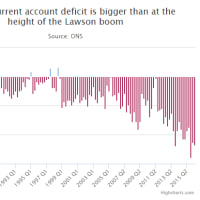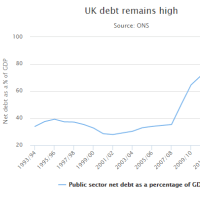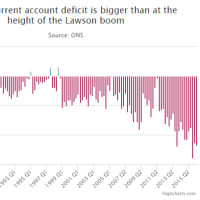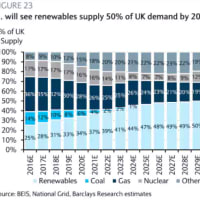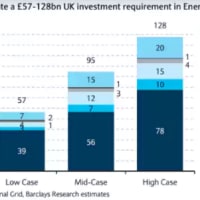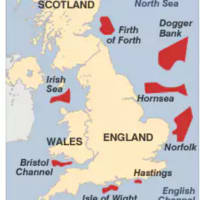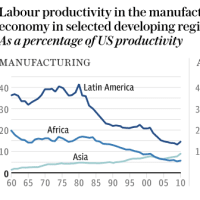Global solar dominance in sight as science trumps fossil fuels
(科学が化石燃料に圧勝で世界的に太陽光が優勢に)
By Ambrose Evans-Pritchard
Telegraph: 5:58PM BST 09 Apr 2014


(科学が化石燃料に圧勝で世界的に太陽光が優勢に)
By Ambrose Evans-Pritchard
Telegraph: 5:58PM BST 09 Apr 2014
Solar power will slowly squeeze the revenues of petro-rentier regimes in Russia, Venezuela and Saudi Arabia. They will have to find a new business model, or fade into decline
太陽光発電はロシア、ベネズエラ、サウジアラビアの石油生活国家の収益をゆっくりと先細らせるでしょう。これらの国は新ビジネス・モデルを見つけるか、没落するしかありません。
Solar power has won the global argument. Photovoltaic energy is already so cheap that it competes with oil, diesel and liquefied natural gas in much of Asia without subsidies.
太陽光発電が世界的勝利を収めました。
太陽光発電エネルギーは既にアジアのほとんどで子会社がなくても石油、ディーゼル、LNGに対抗出来るほどほど安くなりました。
Roughly 29pc of electricity capacity added in America last year came from solar, rising to 100pc even in Massachusetts and Vermont. "More solar has been installed in the US in the past 18 months than in 30 years," says the US Solar Energy Industries Association (SEIA). California's subsidy pot is drying up but new solar has hardly missed a beat.
米国では昨年、太陽光発電が発電容量を約29%増大させ、マサチューセッツ州とバーモント州ですら100%に達しました。
「米国でこの18か月間に、過去30年間を上回る規模の太陽光発電施設が設置された」と米国SEIAは述べています。
カリフォルニア州は金庫が空になりつつありますが、この新しい太陽光発電は全くどこ吹く風です。
The technology is improving so fast - helped by the US military - that it has achieved a virtous circle. Michael Parker and Flora Chang, at Sanford Bernstein, say we entering a new order of "global energy deflation" that must ineluctably erode the viability of oil, gas and the fossil fuel nexus over time. In the 1980s solar development was stopped in its tracks by the slump in oil prices. By now it has surely crossed the threshold irreversibly.
この技術は猛スピードで改良されているため(米軍が支援しています)好循環を実現しました。
サンフォード・バーンスタインのマイケル・パーカー氏とフローラ・チャン氏は、時間を経るにつれて石油、ガス、その他化石燃料の実用性を否応なく減らす「グローバル・エネルギー・デフレ」というニューオーダーに突入しつつあると言います。
1980年代、太陽光発電技術の開発は石油価格の下落によって中断されました。
もうこのハードルを不可逆的に超えてしまったはずです。
The ratchet effect of energy deflation may be imperceptible at first since solar makes up just 0.17pc of the world's $5 trillion energy market, or 3pc of its electricity. The trend does not preclude cyclical oil booms along the way. Nor does it obviate the need for shale fracking as a stop-gap, for national security reasons or in Britain's case to curb a shocking current account deficit of 5.4pc of GDP.
エネルギー・デフレのもの凄い効果は、初めの内はわからないかもしれません。
とういのも、太陽光は世界で5兆ドルと言われる規模のエネルギー市場の僅か0.17%を占めるに過ぎないからです(電力は3%)。
このトレンドが循環的な石油バブルの到来を止めることはありません。
また、国家安全保障を理由に、または英国の場合、GDPの5.4%というとんでもない規模の経常赤字を減らすために、応酬処置としてのシェール・フラッキングの必要性を除去することもありません。
But the technology momentum goes only one way. "Eventually solar will become so large that there will be consequences everywhere," they said. This remarkable overthrow of everything we take for granted in world energy politics may occur within "the better part of a decade".
でも、この技術的なモメンタムは一方向にしか動きません。
「いずれその影響が隅々まで行き渡るほど太陽光はビッグになるよ」とのこと。
ワールド・エネルギー・ポリティクスで当たり前であること全ての見事なガラガラポンは「この10年」以内に起こるかもしれません。
If the hypothesis is broadly correct, solar will slowly squeeze the revenues of petro-rentier regimes in Russia, Venezuela and Saudi Arabia, among others. Many already need oil prices near $100 a barrel to cover their welfare budgets and military spending. They will have to find a new business model, or fade into decline.
この仮説がほぼ正しければ、太陽光発電はロシア、ベネズエラ、サウジアラビアの石油生活国家の収益をゆっくりと先細らせるでしょう。
多くは既に、石油価格がバレル100ドル近くなければ社会保証と軍事費を賄えなくなっています。
これらの国は新ビジネス・モデルを見つけるか、没落するしかありません。
The Saudis are themselves betting on solar, investing more than $100bn in 41 gigawatts (GW) of capacity, enough to cover 30pc of their power needs by 2030 rather than burning fossil fuel needed for exports. Most of the Gulf states have comparable plans. That will mean more crude - ceteris paribus - washing into a deflating global energy market.
サウジアラビアは自らも太陽光に賭けており、輸出に必要な化石燃料を燃やすよりも、2030年までに消費電力の30%に相当する41Gwの発電を可能にすべく、1,000億ドル以上を投資しています。
湾岸諸国のほとんどが同じような計画です。
これはつまり(他の条件が一定なら)更に原油が国際エネルギー市場に雪崩れ込んで価格を落ち込ませるということです。
Clean Energy Trends says new solar installations overtook wind turbines worldwide last year with an extra 36.5GW. China alone accounted for a third. Wind is still ahead with 2.5 times old capacity but the "solar sorpasso" will be reached in 2021 as photovoltaic (PV) costs keep falling.
クリーン・エネルギー・トレンズによれば、昨年は太陽光発電施設の設置が風力発電用タービンを超えたそうです(+36.5Gw)。
中国だけでその3分の1を占めます。
風力発電量は今も太陽光の2.5倍に上りますが、太陽光発電コストは下落の一途をたどっているので、2021年には「ソーラー・ソルパッソ(太陽光の追い越し)」となるでしょう。
The US National Renewable Energy Laboratory says scientists can now capture 31.1pc of the sun's energy with a 111-V Solar Cell, a world record but soon to be beaten again no doubt. This will find its way briskly into routine use. Wind cannot keep pace. It is static by comparison, a regional niche at best.
米国再生可能エネルギー研究所によれば、研究者等は今や111-Vソーラー・セルによって太陽光エネルギーの31.1%を確保出来るとのこと。
世界記録ですが間もなく更新されることは間違いありません。
これは素早く実用化されるでしょう。
風力はこのペースについていけません。
太陽光に比べて停滞しており、良くて地域的なニッチに応じるだけです。
A McKinsey study said the average cost of installed solar power in the US across all sectors has dropped to $2.59 from more than $6 a watt in 2010. It expects this fall to $2.30 by next year and $1.60 by 2020. This will put solar within "striking distance" of coal and gas, it said.
マッキンゼーが行った調査では、米国での太陽光発電の平均設置コストは全セクターで、2010年の1ワット当たり6ドル超から2.59ドルまで下落したことがわかりました。
来年までに2.30ドル、2020年までに1.60ドルまで下がるとの見通しです。
これで太陽光発電は石炭やガスを「射程距離」に収めるだろうとのこと。
Solar cell prices have already collapsed so far that other "soft costs" now make up 64pc of residential solar installation in the US. Germany has shown that this too can be slashed, partly by sheer scale.
太陽光パネルの価格は既に値下がりし過ぎて、米国の住宅向け太陽光パネル設置費用のうち、その他の「ソフト・コスト」が占める割合は64%に達しました。
ドイツも、その圧倒的な規模もあり、同じように値下がりさせられるようです。
It is hard to keep up with the cascade of research papers emerging from brain-trusts in North America, Europe and Japan, so many brimming with optimism. The University of Buffalo has developed a nanoscale microchip able to capture a "rainbow" of wavelengths and absorb far more light. A team at Oxford is pioneering use of perovskite, an abundant material that is cheaper than silicon and produces 40pc more voltage.
北米、ヨーロッパ、日本の顧問団から次々と出される研究論文に追いつくのは困難であり、その多くは極めて楽観的です。
バッファロー大学は波長の「虹」を捉えて遥かに沢山の光を吸収することが出来るナノスケール・マイクロチップを開発しました。
オックスフォード大学の研究チームは、シリコンよりも安価であり電圧は40%も高く豊富に存在する物質、ペロブスカイトの画期的利用方法を開発中です。
One by one, the seemingly intractable obstacles are being conquered. Israel's Ecoppia has just begun using robots to clean the panels of its Ketura Sun park in the Negev desert without the use of water, until now a big constraint. It is beautifully simple. Soft microfibers sweep away 99pc of the dust each night with the help of airflows.
一つずつ、一見手におえない障害が取り除かれています。
イスラエルのEcoppiaはつい先日、ネゲブ砂漠にあるKetura Sun Parkにある太陽光パネルを、これまで大きな障害だった水を使わずに掃除するロボットの利用を開始しました。
驚くほど簡単です。
毎晩、柔らかなマイクロファイバーと空気の流れで埃の99%を除去しています。
Professor Michael Aziz, at Harvard University, is developing a flow-battery with funding from the US Advanced Research Projects Agency over the next three years that promises to cut the cost of energy storage by two-thirds below the latest vanadium batteries used in Japan.
ハーバード大学のマイケル・アジズ教授は3年前から米国防高等研究計画局の資金で、エネルギー貯蔵コストを日本で利用されている最新のバナジウム電池より3分の2抑えるフロー電池を開発しています。
He said the technology gives us a "fighting chance" to overcome the curse of intermittency from wind and solar power, which both spike and drop off in bursts. "I foresee a future where we can vastly cut down on fossil fuel use."
教授は、この技術で発電量を激増、激減させる風力、太陽光発電の間欠性の呪いを乗り越える「望み」が出来ると言いました。
「化石燃料の利用を激減させられる未来が見える」
Even thermal solar is coming of age, driven for now by use of molten salts to store heat and release power hours later. California opened the world's biggest solar thermal park in February in the Mojave desert - the Ivanpah project, co-owned by Google and BrightSource Energy - able to produce power for almost 100,000 homes by reflecting sunlight from 170,000 mirrors onto boilers that generate electricity from steam. Ivanpah still relies on subsidies but a new SunPower project in Chile will go naked, selling 70 megawatts into the spot market.
今のところは熱を貯蔵して数時間後にエネルギーを放出するための溶融塩の利用が推進力となって、太陽熱まで本格的になりつつあります。
カリフォルニア州は2月にモハーベ砂漠に世界最大の太陽熱発電所(グーグルとブライトソース・エネルギーが共同オーナーを務めるアイヴァンパ・プロジェクト)を稼働しました。
これは水蒸気で発電するボイラーに170,000枚の鏡で太陽光を反射させることにより、10万戸近い住宅に電力を供給することが出来ます。
アイヴァンパは未だ補助に頼っていますが、チリで新たに始まるサンパワー・プロジェクトは補助を受けておらず、市場で70Mwを販売します。
Deutsche Bank say there are already 19 regional markets around the world that have achieved "grid parity", meaning that PV solar panels can match or undercut local electricity prices without subsidy: California, Chile, Australia, Turkey, Israel, Germany, Japan, Italy, Spain and Greece, for residential power, as well as Mexico and China for industrial power.
ドイチェ・バンクによれば、世界には既に19の地域市場が存在しており、それぞれ「グリッド・パリティ」に達しているとのこと。
グリッド・パリティとは、太陽光パネルによる電力料金が補助を受けなくても地元の電力価格と同額またはそれを下回ることが出来るということです。
カリフォルニア州、チリ、オーストラリア、トルコ、イスラエル、ドイツ、日本、イタリア、スペイン、ギリシャでは住宅向け、メキシコと中国では産業向けにグリッド・パリティが達成されています。
This will spread as battery storage costs - often a spin-off from electric car ventures - keep dropping. Sanford Bernstein says it may not be long before home energy storage is cheap enough to lure households away from the grid en masse across the world.
これはバッテリー貯蔵コストの下落に伴って普及するでしょう(電気自動車事業のスピンオフであることが多い)。
サンフォード・バーンスタインは、住宅向けエネルギー貯蔵は遠からぬ将来、世界中各地の住宅を送電網から遠ざけさせられるほど安価になるかもしれないとしています。
Utilities that fail to adapt fast will face "disaster". Solar competes directly. Each year it is supplying a bigger chunk of peak power needs in the middle of the day when air conditioners and factories are both at full throttle. "Demand during what was one of the most profitable times of the day disappears," said the report. They cannot raise prices to claw back lost income. That would merely accelerate what they most fear. They are trapped.
もたもたしている電力会社は「大惨事」に見舞われるでしょう。
太陽光とは真っ向勝負です。
エアコンと工場がフル操業している日中ピーク時の電力供給割合は毎年大きくなっています。
「一日の中で時間の一つの需要が消滅している」と同社はレポートに記しています。
電力会社は失った収入を取り戻すためにも値上げは出来ません。
それはこれらの企業が最も恐れている事態を加速するだけでしょう。
罠にかかってしまったわけです。
Michael Liebreich, from Bloomberg New Energy Finance, says we can already discern the moment of "peak fossil fuels" around 2030, the tipping point when the world starts using less coal, oil and gas in absolute terms, but because they cannot compete, not because they are running out.
ブルームバーグ・ニュー・エネルギー・ファイナンスのマイケル・リーブライヒ氏は、世界が石炭、石油、ガスの絶対資料量を減らし始める2030年頃の「ピーク化石燃料」など既に無視出来ると言いますが、それは枯渇するからではなく、競争出来ないからなのだそうです。
This is a remarkable twist of history. Just six years ago we faced an oil shock with crude trading at $148. The rise of "Chindia" and the sudden inclusion of 2bn consumers into the affluent world seemed to be taxing resources to breaking point. Now we can imagine how China will fuel its future fleet of 400m vehicles. Many may be electric, charged by PV modules.
これは歴史の素晴らしい展開です。
ほんの6年前、僕らは148ドルという原油価格でオイルショックに見舞われました。
「チンディア」の台頭と20億人もの消費者爆増でリソースはパンクしそうに見えました。
今、僕らは中国が将来な風に4億台もの自動車を走らせるのか、想像が出来ます。
多くは太陽光エネルギーで充電する電気自動車かもしれません。
For Germany it is a bitter-sweet vindication. The country sank €100bn into feed-in tariffs or in solar companies that blazed the trail, did us all a favour, and mostly went bankrupt, displaced by copy-cat competitors in China. The Germans have the world's biggest solar infrastructure, but latecomers can now tap futuristic technology.
ドイツにとって、これはほろ苦い正しさの証明です。
この国はフィードイン・タリフや太陽光会社に1,000億ユーロも突っ込んでくれました。
これらの太陽光会社は先達となり、僕らの役に立って、殆どは倒産して、中国のパクリ競合に取って代わられました。
ドイツには世界最大規模の太陽光インフラがありますが、新参者は今や未来的テクノロジーを利用することが出来ます。
For Britain it offers a reprieve after 20 years of energy drift. Yet the possibility of global energy deflation raises a quandry: should the country lock into more nuclear power stations with strike-prices fixed for 35 years? Should it spend £100bn on offshore wind when imported LNG might be cheaper long hence?
英国には、20年間のエネルギーごたごたの挙句、一時的救済が与えられます。
が、グローバル・エネルギー・デフレの可能性はジレンマを生んでいます…35年間の固定価格で原発を増強すべきや否や?
輸入LNGの方が長期的にはより安価かもしれないのに、海上風力タービンに1,000億ポンドを突っ込むべきや否や?
For the world it portends a once-in-a-century upset of the geostrategic order. Sheikh Ahmed-Zaki Yamani, the veteran Saudi oil minister, saw the writing on the wall long ago. "Thirty years from now there will be a huge amount of oil - and no buyers. Oil will be left in the ground. The Stone Age came to an end, not because we had a lack of stones, and the oil age will come to an end not because we have a lack of oil," he told The Telegraph in 2000. Wise old owl.
世界にとって、これは一世紀に一度という戦略地政学的秩序が吹き飛ぶ前兆です。
サウジアラビアのベテラン石油相、Sheikh Ahmed-Zaki Yamani大臣は随分前に嫌な予感を覚えていました。
「今から30年経ったら、物凄い量の石油があるのに客はゼロということになるだろう。石油は地中に放置されるだろう。石器時代は終わったが、それは石がなくなったからではない。石油時代は終わるが、それは石油がなくなったからではない」と大臣は2000年に小紙に語っていました。
正に達見でございます。












